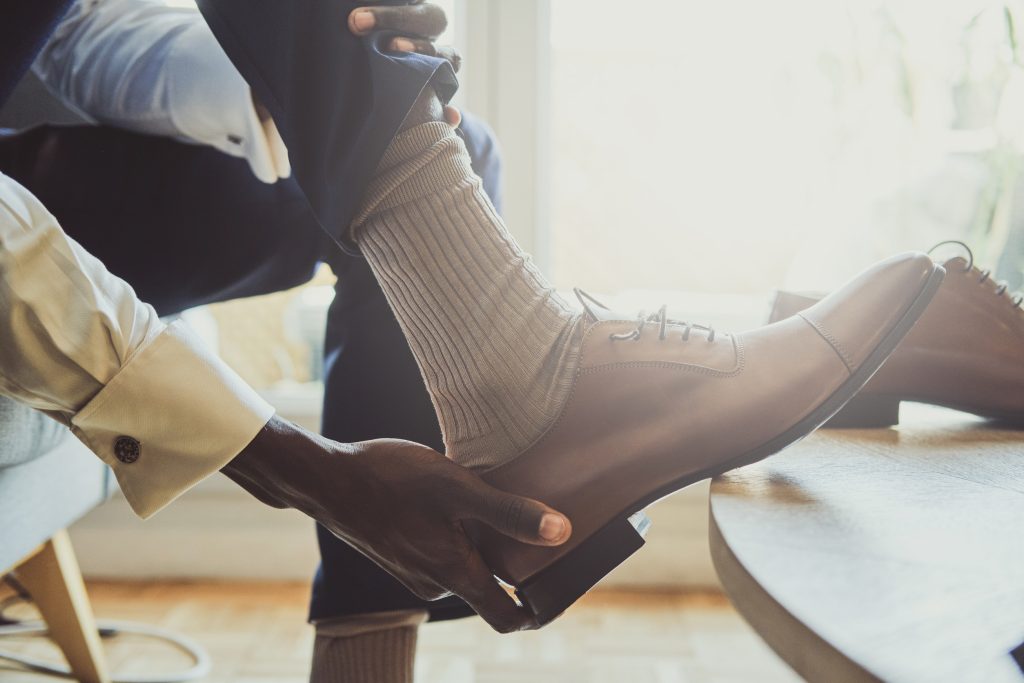
Socks might be a small part of your wardrobe, but they play a significant role in maintaining your overall health and hygiene. Wearing the same pair of socks for too long may seem like a minor oversight, but it can lead to surprising and sometimes serious consequences. From unpleasant odors to infections and other medical concerns, understanding the risks of prolonged sock usage can encourage you to prioritize clean habits. Let’s uncover the hidden dangers of neglecting fresh socks and explore how small changes can protect your feet and improve your well-being.
Increased Bacterial Growth
Sweat accumulates in socks throughout the day, creating an environment where bacteria thrive. When socks aren’t changed daily, bacteria multiply, producing unpleasant odors that linger and are difficult to eliminate. Beyond the smell, the bacteria can seep into the skin, increasing the risk of infections like athlete’s foot. Prolonged exposure to bacteria contributes to irritation, discomfort, and potential skin conditions. Switching to fresh socks daily helps curb bacterial growth and prevents these hygiene-related issues.
Risk of Fungal Infections
Moisture and warmth trapped in dirty socks promote fungal growth. Wearing socks for too long increases the likelihood of developing conditions like toenail fungus and athlete’s foot. These infections often cause redness, itching, peeling, and in some cases, cracked skin. For individuals with sensitive or compromised immune systems, fungal infections can escalate and require medical treatment. Clean socks and breathable materials are essential to reducing moisture and preventing fungal concerns.
Skin Irritation and Blisters

Dirty or worn-out socks lose their protective cushioning, increasing friction between your feet and shoes. This can result in painful blisters, calluses, or rashes that worsen with prolonged sock use. Sweat and dirt build-up further irritate the skin, especially if you’re wearing damp socks during physical activity. Over time, excessive friction contributes to skin breakdown, prolonging healing and potentially leading to infections. Choosing snug-fitting, clean socks reduces friction and ensures skin comfort and protection.
Persistent Foot Odor
Foot odor is one of the most noticeable effects of wearing socks for extended periods. Sweat combines with bacteria in dirty socks, amplifying the unpleasant smell. Even if you wash your feet, wearing the same socks introduces bacteria back onto your skin. Foot odor can stick to shoes as well, creating a cycle of persistent smell no matter how much you clean. Fresh socks every day not only combat odor but also prevent its transfer to footwear, keeping your overall hygiene in check.
Circulation Issues
Tight socks worn for too long can restrict blood flow to your feet and lead to swelling or discomfort. Poor circulation causes numbness and tingling sensations, especially in individuals with pre-existing conditions like diabetes or neuropathy. Over time, wearing the same socks repeatedly without ensuring proper fit exacerbates circulation problems. Looser, breathable socks made from quality materials promote blood flow and reduce swelling. It’s important to address circulation concerns early to avoid long-term complications.
Impact on Foot Hygiene
Dirty socks spread bacteria and fungi to shoes, creating a cycle of poor foot hygiene. Reusing socks daily causes shoes to absorb germs, which can reintroduce harmful bacteria to clean socks or feet. This cycle undermines your efforts to maintain hygiene and increases the risk of infections. Washing socks thoroughly and rotating shoes regularly can break this cycle and protect your foot health. Prioritizing these habits ensures a healthier and fresher environment for your feet.
Socks as a Vital Health Tool
Socks protect your feet from debris, friction, and environmental exposure, making them an essential part of your attire. Neglecting sock hygiene compromises their protective function, leaving your feet vulnerable to irritation and infection. Investing in socks made from quality materials like cotton or wool improves their effectiveness in protecting your skin. Moisture-wicking and breathable socks add an extra layer of defense against excessive sweat and odor. A thoughtful approach to sock selection enhances both comfort and hygiene.
Small Choices, Big Benefits
Changing socks daily might seem insignificant, but the benefits are far-reaching. Fresh socks reduce bacteria, prevent fungal infections, and keep your feet comfortable. During active or humid days, swapping socks midday ensures optimal hygiene and moisture control. Washing your socks with antibacterial detergents provides an added layer of cleanliness and protection. These simple changes go a long way in preserving the health of your feet and overall comfort.
Fresh Habits Are The Best Habits
Paying attention to sock hygiene is an easy yet impactful way to improve your daily routine. Swapping out socks regularly prevents a wide range of issues, from odors to infections. Choosing socks with proper fit and breathable materials further elevates your foot care habits. Fresh socks not only enhance comfort but also contribute to overall health and cleanliness. This small step brings major benefits to your physical well-being and confidence.
How often do you change your socks? Have you noticed improvements in foot health from better sock hygiene? Share your tips and experiences in the comments below!
Read More:
Waking Up at 4:30 AM: The Unexpected Mental Health Boost You Need
Your Money, Your Problems: 7 Reasons Money Is Destroying Your Mental Health

Latrice is a dedicated professional with a rich background in social work, complemented by an Associate Degree in the field. Her journey has been uniquely shaped by the rewarding experience of being a stay-at-home mom to her two children, aged 13 and 5. This role has not only been a testament to her commitment to family but has also provided her with invaluable life lessons and insights.
As a mother, Latrice has embraced the opportunity to educate her children on essential life skills, with a special focus on financial literacy, the nuances of life, and the importance of inner peace.
